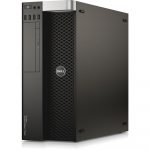Source: Computer & Video Game Magazines – Ahoy! – Issue Number 9 – September 1984
There were a large number of companies that made add-on hardware and peripherals for Commodore computers. MSD is perhaps one of the most well known on the 8-bit side of things. This ad from the September 1984 issue of Ahoy! features several of their products for the Commodore 64 (as well as the PET and VIC-20).
Featured most prominently at the top is MSD’s Super Disk I and Super Disk II. The primary difference between the two is that one was a single drive and the other contained two disk drives in one enclosure. These were probably MSD’s most well known products. They were 5.25″ disk drives that were mostly compatible with Commodore’s 1541. Being only “mostly” compatible, if your primary goal was playing games then these were perhaps not the drives for you. They were more expensive than the standard 1541 model. However, their primary advantages were that they were very fast and very reliable. We are talking 20 times faster at least and sometimes much more. These would be great drives if you were running a BBS or doing any kind of serious work with your Commodore. Not quite as fast or nearly as much storage as a hard drive but much more affordably at the time.
The other items mentioned in this ad were:
1) An RS-232 Serial Interface – basically these were used to connect modems and other serial devices to Commodore 8-bit computers. They lacked a standard serial interface but simple adapters like this one solved that problem.
2) Parallel Interface – Again, Commodore 8-bit computers did not come with the common standard parallel interface so an adapter was needed for things like printers.
3) Monitor cables – Commodore computers typically used monitors with separate chroma and luma cables in addition to sound. Using such a monitor provided a much better picture than using a TV with an RF interface which could also be done. And sometimes you just need an extra cable.
3) The CEX-4 Expandoport – This basically expanded the User Port into multiple ports that you could switch between various add-ons. This saved you from unplugging and plugging things if you had more than one device.
4) IEEE Interface – This is a high speed IEEE-488 bus interface. You needed to use this with the SD-1 and SD-2 drives if you wanted to get that extra speed out of them. Using the standard serial interface they would be no faster than a standard 1541 drive. They were useful for interfacing other devices as well.


